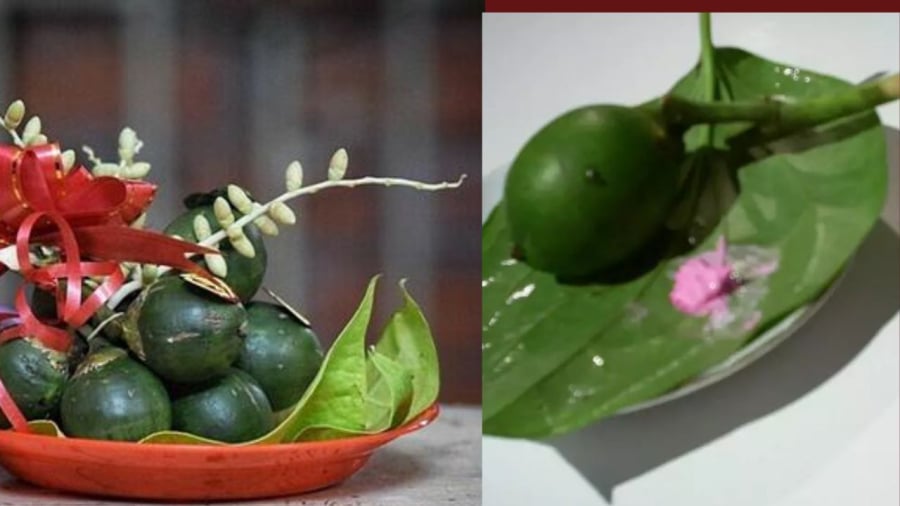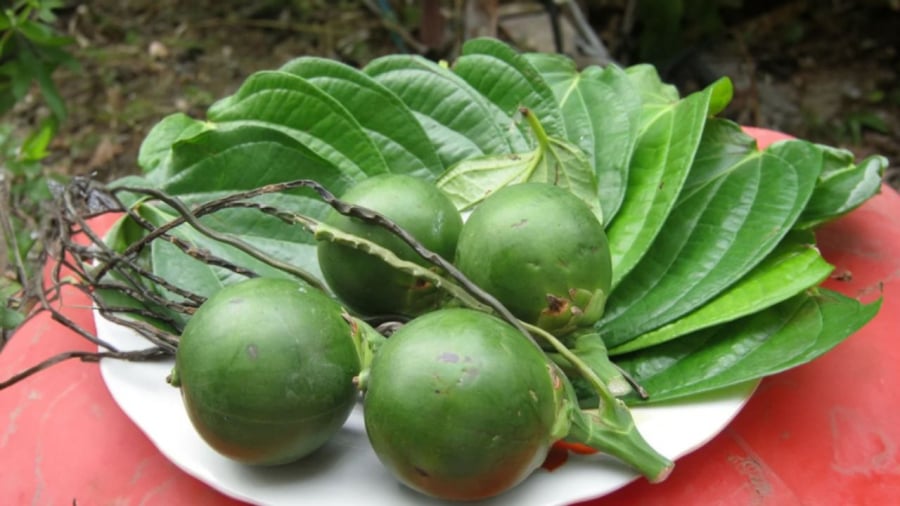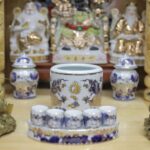The Betel and Areca Nuts: A Cultural Tradition in Vietnamese Spiritual Practices
The offering of betel leaves and areca nuts is an integral part of Vietnamese culture and spiritual practices. The traditional saying, “a betel starts a conversation,” highlights the importance of this custom, which is believed to bring harmony and prosperity to the family. The combination of betel and areca nuts symbolizes immortality and the unity of yin and yang, making it a crucial element on any ancestral altar.
How to Properly Arrange Betel and Areca Nuts:
In Asian culture, odd numbers are considered yang, representing growth and development, while even numbers are seen as yin, indicating stagnation. Therefore, when offering betel and areca nuts, the quantity should follow odd numbers. For example, one areca nut should be accompanied by one, three, or five betel leaves.
It is important to remember that the set is not complete without lime, which is traditionally applied to the betel leaves. However, as consuming betel and areca nuts after rituals is less common nowadays, lime is often overlooked. Those who are meticulous will ask for lime when purchasing the set to ensure the full flavor.

The Indispensable Betel and Areca Nuts in Worship
When placing the set on the altar, follow the principle of “East for flat items and West for fruits” (with your back facing the altar). The betel and areca nuts can be placed on a separate plate or included in the tray of five types of fruits, but they must always be positioned in front of the incense burner, never behind it.
It is considered a taboo to separate betel from areca nuts when offering them on the altar, as it is believed to bring disharmony and conflict within the family. The betel leaves should be placed together, either facing up or down, depending on regional customs, and can be arranged aesthetically when presented in a tray.
Notes on Selecting Betel and Areca Nuts for Worship:
When choosing areca nuts, opt for nếp variety with round, plump, and dark green fruits. Avoid ripe nuts with dry stems. For worship, select semi-ripe nuts with stems, as they symbolize wealth and prosperity. As for betel leaves, choose the semi-ripe ones that are neither too old nor too young, especially avoiding the young leaves. The leaves should be a vibrant green, free from dark spots or wilting.

Do Not Let the Betel and Areca Nuts Wilt on the Altar
Ensure that the size of the areca nuts and betel leaves is proportional. If using multiple nuts and leaves on the same tray, strive for uniformity in size. Before placing them on the altar, gently wipe and dry the betel and areca nuts to remove any dust or moisture. It is recommended to purchase these items rather than asking for them.
After the worship ceremony, the betel and areca nuts can be taken down and discarded along with the five types of fruits. However, never leave them to wilt and dry on the altar. The betel leaves can be used for facial cleansing, while the seeds and fruits can be soaked in alcohol to treat bad breath and toothache. Avoid throwing them into the trash.
This information is for reference only and is based on cultural beliefs.
The Ultimate Guide to Cooking Black Bean Dessert: A Quick, Tender, and Nutritious Treat
“Indulge in the ultimate comfort dessert with this quick and easy guide to making the creamiest, most nutritious black bean sweet soup. Discover the secrets to creating a dish that melts in your mouth, with beans so tender they’ll have you dreaming of your next bite. This recipe is a must-try for all food enthusiasts seeking a tasty treat that’s both satisfying and packed with flavor.”






































